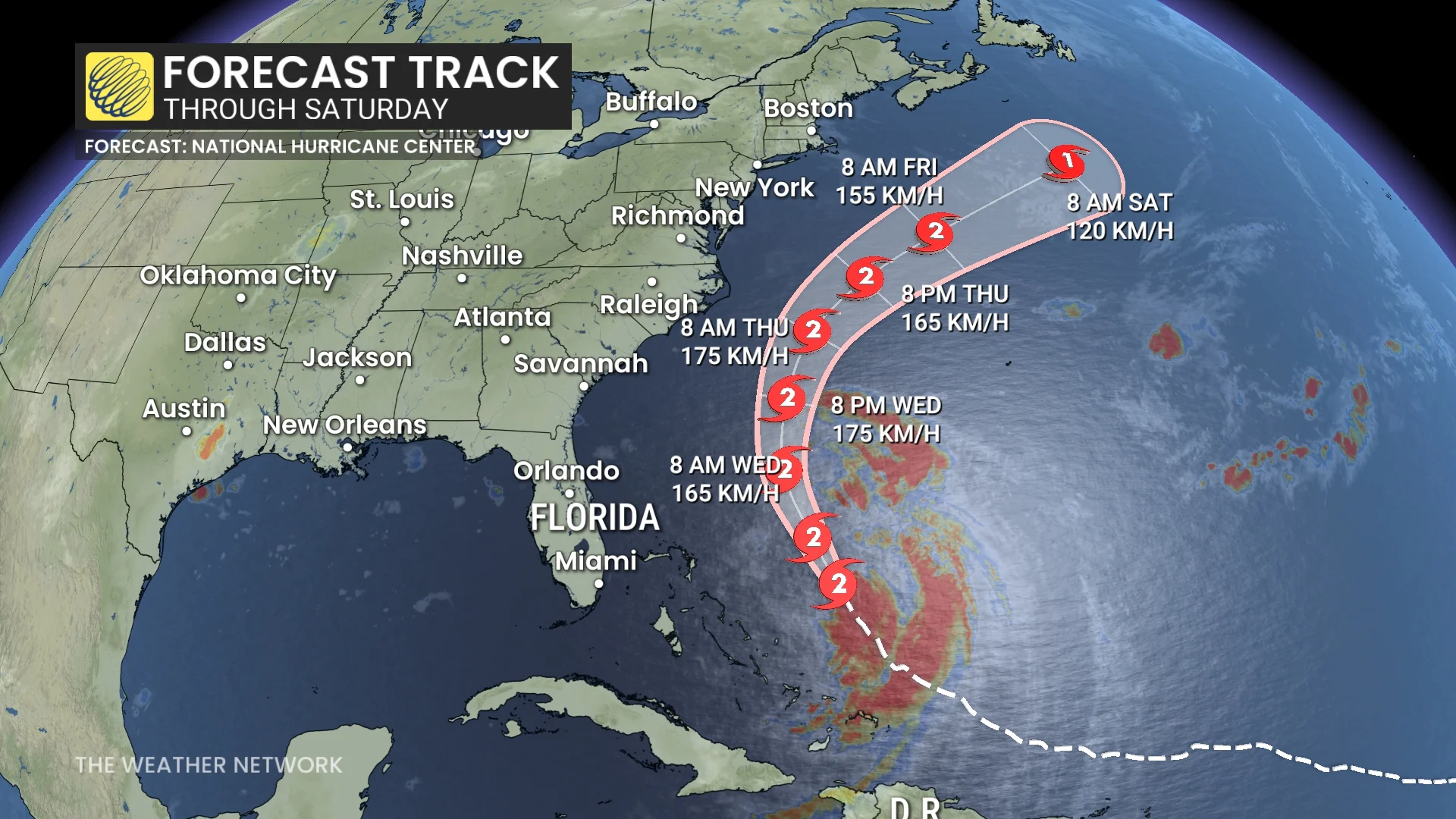
Hurricane Erin looks to sideswipe Atlantic coast, dangerous swells, rip currents
Storm surge and tropical storm warnings are now in effect for the North Carolina Outer Banks. Life-threatening rip currents are anticipated along beaches on the U.S. East Coast.
Hurricane Erin is forecast to generate dangerous surf and rip currents over the next several days, affecting beaches in the Bahamas, much of the U.S. East Coast, Bermuda, and Atlantic Canada.
DON’T MISS: An inside look at Hurricane Erin’s astounding rise to Category 5
The U.S. National Weather Service is warning beachgoers in these regions to heed guidance from lifeguards, local authorities, and posted beach warning flags.
Despite dropping to a Category 2 storm on Tuesday morning, Erin is expected become even larger while moving over the western Atlantic throughout the week.

A tropical storm warning is in effect from Beaufort Inlet to Duck, N.C. A storm surge warning is currently in effect for Cape Lookout to Duck, N.C.
SEE ALSO: Powerful, dangerous Hurricane Erin could generate 100-foot waves
According to the forecast track, the centre of Erin is expected to pass east of the Bahamas on Tuesday night before moving over the western Atlantic between the U.S. East Coast and Bermuda on Wednesday and Thursday.
Fluctuations in strength are possible over the next few days.
SEE ALSO: La Niña watch issued for this winter as key factors signal change
Outer bands of Erin are expected to bring heavy, localized rainfall to parts of the Turks and Caicos through Tuesday, continuing into Tuesday night for the Bahamas. An additional 25-75 mm of rain is possible, with storm totals reaching up to 200 mm, which may result in flash and urban flooding.
Heavy rainfall may also impact North Carolina's Outer Banks from Wednesday night into Thursday, with amounts of 25-50 mm and isolated totals of up to 100 mm.

Watching for large swells over Atlantic Canada
According to the Canadian Hurricane Centre (CHC), given the large size of Erin, it is likely to bring heavy wave activity to Eastern Canadian waters and also to the south-facing Atlantic coastlines of Nova Scotia and Newfoundland Friday and Saturday.
"At this stage we don't expect the storm to impact land other than the ocean swell, which will likely create hazardous surf conditions including rip currents - of particular risk along the Atlantic Coast of Nova Scotia Friday," said the CHC in the Tuesday statement.
Key offshore areas to monitor closely include George's Bank, the Scotian Slope, Laurentian Fan and the Southern Grand Banks. Storm-force winds are also possible over southern portions of these forecast zones.

Swells from Erin are forecast to impact the Bahamas, Bermuda, and the U.S. East Coast over the next several days. These elevated ocean conditions are likely to create life-threatening surf and rip currents.
STAY SAFE: Rip currents are a natural hazard along coasts – here’s how to spot them
Always heed the advice and orders of local officials and stay out of the water if there’s a threat for rip currents. Don’t panic if you’re ever caught in a rip current.

If you can’t swim, calmly signal for help and tread water until assistance arrives. Swimmers should swim parallel to the beach until you’re out of the rip current, then swim back to shore.
